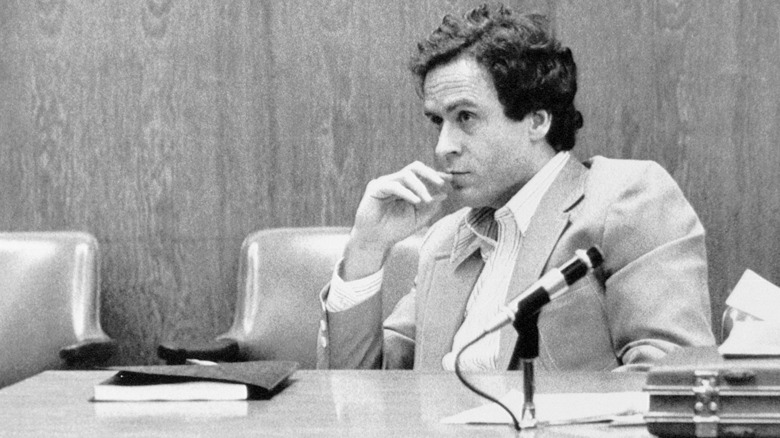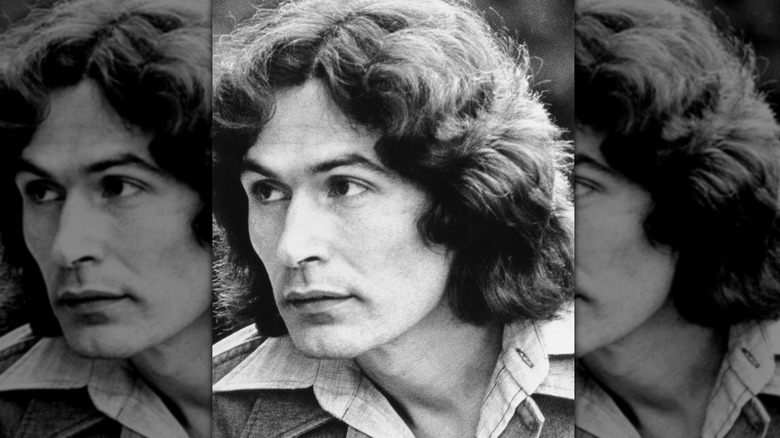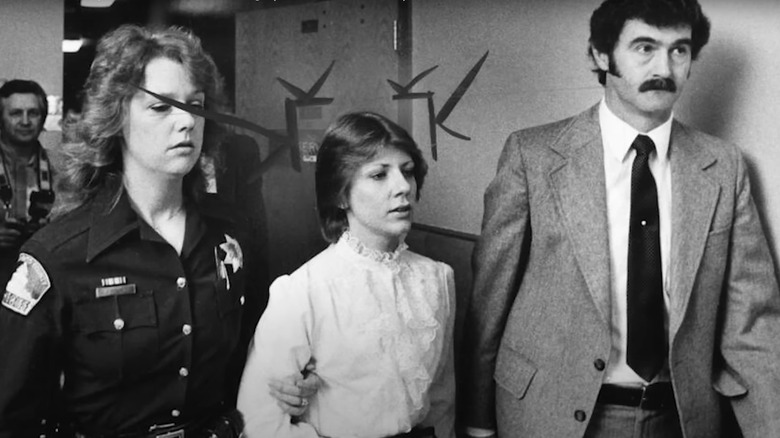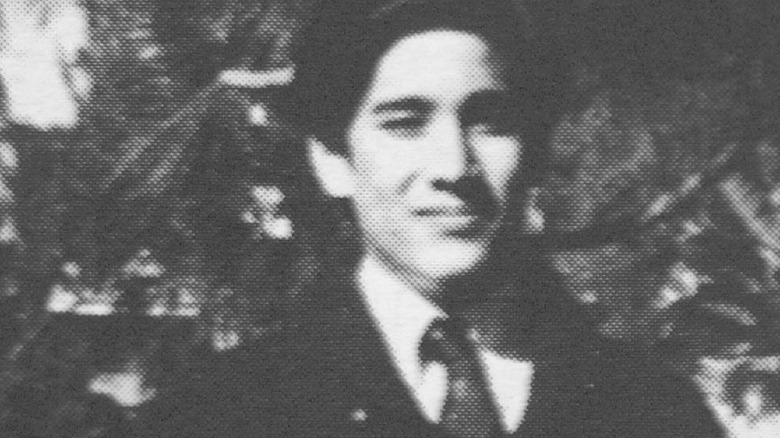The Most Intelligent Serial Killers' IQs May Surprise You
There are a lot of myths out there about serial killers. Whether due to pop culture or a handful of sensationalized cases, many of us think of such murderers as sexually obsessive loners with a fixed M.O. and severe mental illness. The evidence for any of these myths is limited to nonexistent. And the same goes for another persistent notion about serial killers: That they're highly intelligent.
Studies have found that IQ varies among serial killers. One from Radford University found an average IQ of 94.5 and a median IQ of 86 among its sample of 271, statistics within the average for the general population. Organized by killing method, serial killers who favored bombing had the highest average IQ, and those who bludgeoned their victims to death had the lowest. A caveat of such studies is that they deal with serial killers who have been caught, and they could be biased by killers who deceive researchers and investigators.
Nevertheless, some serial killers do appear to have genuinely standout intelligence, though intellect doesn't necessarily correlate with body count, evading the law, or fame. The names topping a list of smartest serial killers may surprise you.
Rodney Alcala
When Rodney Alcala entered the army at age 17, his IQ was tested and found to be 135. Later assessments placed it somewhere between 160 and 170. He was a graduate of UCLA and NYU fine arts programs, newspapers described him as having "near genius" brainpower, and a law professor conceded to The San Diego Union-Tribune that Alcala was "obviously a bright guy."
Alcala's intellect, cultural background, and way with people made him an effective con artist. He traveled around the country, picking up work as a camp counselor, photographer, and typist, sometimes under assumed names. This helped him evade the law, for a time, for the rape and assault of an 8-year-old girl in 1968. When he was finally arrested in 1971 and later convicted of the crime, he served only three years, and a repeat offense on assault charges landed him just two years. His record escaped the notice of the producers of "The Dating Game," which had him on as a contestant in 1978. The woman on that show picked Alcala but declined to date him, finding him creepy.
That one appearance branded Alcala as "The Dating Game Killer" when it came to light that he had murdered several women, possibly more than 100. Arrested in 1979 and sentenced to death in 1980 for the murder of 12-year-old Robin Samsoe, Alcala's sentence was overturned, relitigated, and overturned again. He wrote a book protesting his innocence and later acted as his own attorney at a fresh trial in 2010, an act that some of his victims' families thought was a sadistic game to further torment them. He was ultimately convicted of five counts of fire-degree murder and sentenced to death again before dying in 2021 before he could be executed.
Ted Kaczynski
You may have seen Ted Kaczynski more commonly described as a domestic terrorist than a serial killer, and his socio-political motives are more in line with working definitions of terrorism than the popular image of a killer driven by compulsion or sexual excitement. On his death, Alex Traub of The New York Times wrote that Kaczynski combined "the periodic targeting of the demented serial killer, and the ideological fanaticism of the terrorist."
Whatever descriptor of violence is used for him, Kaczynski had an extraordinary intellectual background. In the fifth grade, he scored 167 on a counselor-administered IQ test. He jumped ahead to seventh grade afterward, which he said left him feeling like an outcast, and went on to enter Harvard at age 16. As a graduate student at the University of Michigan, his mind and his drive left a lasting impression on his professors, one of whom couldn't even solve the math problem that got Kaczynski into the program. He got a job as a professor of mathematics at Berkeley at 25 before dropping off the grid and resorting to violence.
After "the Unabomber," as he came to be known, was arrested, Kaczynski took another IQ test. He scored 136, still well above average but significantly lower than in his youth. The difference may have been in administration — the later test was conducted by a mental health professional, Dr. Sally Johnson, for her 1998 psychiatric competency report. She also diagnosed Kaczynski with schizophrenia, which can affect IQ over time. That diagnosis remains controversial, and Kaczynski, who died in 2023, maintained his sanity.
Charlene Gallego
Charlene Williams began life in a warm and sheltered home environment. An only child, she was doted on by her middle-class parents to the point of being spoiled. She had a knack for the violin, being described in some places as a prodigy, and she scored 160 on an IQ test. But her home life was disrupted by an accident that disabled her mother, and rather than excelling in school, the teenaged Williams indulged in drink, drugs, sex, and gambling with her mother's money.
Williams had two failed marriages behind her when she married Gerald Gallego, a dangerous man with a criminal record for rape, assault, and robbery that she later claimed she was unaware of. As a couple, they were responsible for what became known as the Sex Slave Murders, beginning in 1978. Allegedly due to Gallego's erectile dysfunction, they sought sexual pleasure by kidnapping young victims, raping them, and killing them. Williams lured potential targets in, and Gallego dispensed with them.
After their capture in 1980, Williams confessed to her crimes, testified against Gallego, and maintained that she had been coerced and brainwashed. Until his death in 2002, Gallego insisted otherwise, saying she pinned the blame on him to save herself. Some of the victims' parents also considered Williams just as guilty as her husband. Nevertheless, Williams received a deal for her cooperation. She was released in 1997 and has maintained that she's turned her life around since.
Carroll Edward Cole
By his own confession through his memoirs (via Charlotte Greig's "Evil Serial Killers: In the Minds of Monsters"), Carroll Edward Cole committed his first murder at age 9, when he drowned a classmate who bullied him. Cole was frequently targeted by bullies due to his name. He was also bullied and abused by his mother, who dressed him in girls' clothes, mocked him, and threatened to beat him if he ever told his father about her affairs, which she sometimes brought Cole to. He grew up with fantasies of strangling women, and a violent fear and hatred of women stayed with him throughout his life.
While still in school, Cole scored 152 on an IQ test. But his grades were mediocre, and as his fantasies became a reality, he proved a chaotic murderer who frequently ran into the law. At various times in his life, Cole surrendered himself to authorities or to psychiatric care, but was never detained for long. His killings were often done in conjunction with alcohol abuse, and he may have cannibalized at least one victim. Cole eventually named his victim count at 35, though he only legally confessed to 13.
Captured and held on suspicion of strangling three women in Texas, Cole was found guilty and initially sentenced to life in prison. After the death of his mother in 1984, he willingly faced another two murder charges in Nevada. Sentenced to death for one of the new charges, he refused any legal effort to overturn his sentence and was executed by lethal injection in 1985.
Andrew Cunanan
Andrew Cunanan's parents told him that he'd be rich and famous someday. He was the pampered, indulged youngest of four children. In the third grade, he scored 147 on an IQ test, and he had an entire encyclopedia set committed to memory by age 10. But such success and spoiling coincided with his parents' collapsing marriage. By the time Cunanan was 19, the family fortune was gone with his father, and he was fighting with his mother over his gay lifestyle. He dislocated her shoulder before leaving San Diego for San Francisco.
Cunanan's life after leaving home was marred by a string of failed relationships, in no small part due to his constant lies. He held no steady job, earning his living through prostitution and relationships with wealthy men. Rejected, and mistakenly believing that he had HIV, Cunanan began his crimes in 1997, killing an ex-friend and ex-lover. He murdered five people over three months, the last of whom was his most famous victim: fashion designer Gianni Versace.
Cunanan never faced justice. After killing Versace, he died by suicide. He was never evaluated by a psychiatrist or psychologist, and his pattern of behavior was suggestive but not wholly consistent with a psychopath. His motives remain unclear, but it's been speculated that Versace's murder, at least, may have been an effort by Cunanan to gain the celebrity he felt entitled to.
If you or anyone you know has been a victim of sexual assault, help is available. Visit the Rape, Abuse & Incest National Network website or contact RAINN's National Helpline at 1-800-656-HOPE (4673).
If you or someone you know is struggling or in crisis, help is available. Call or text 988 or chat 988lifeline.org.





